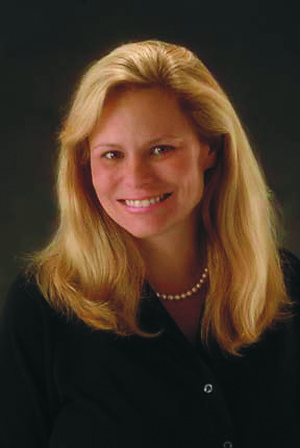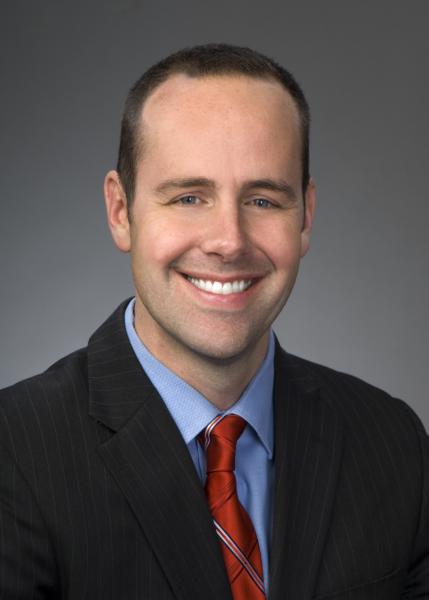Assisted living rate pricing: Impacts on margin
Assisted living (AL) business models and pricing strategies have evolved as more communities accept higher-acuity residents with multiple diagnoses and complex care needs. In response to the recession and depressed housing market, many older adults have delayed the assisted living decision until absolutely necessary or in response to a crisis. The shifting of clinical responsibilities throughout the long-term care (LTC) arena also has contributed to the new paradigm. Many providers have embraced this emerging clinical culture and have blended it with their own proprietary person-centered, hospitality or social model.
HIGH-ACUITY BUSINESS MODEL
Enhanced services are labor intensive and frequent changes in condition require close monitoring. As this new business model matures, it is incumbent upon AL operators to develop and monitor pricing strategies to capture variable service costs and achieve bottom line objectives. The consumer will continue to expect high standards of personal care and clinical excellence.
Not only are greater staffing levels required, but direct care staff will need to develop stronger skill sets through appropriate and ongoing training. AL operators must adopt tools to track these costs, assign appropriate profit margins and adjust staffing levels to accommodate variable monthly direct care needs.
 In a recovering economy, it is not surprising that costs are increasing in assisted living, partially driven by acuity issues. According to the “Genworth 2013 Cost of Care Survey,” the national median assisted living rate is $3,450 a month, an increase of 4.55 percent since 2012. Genworth Financial tracks emerging AL trends nationwide. It has redefined assisted living to include the phrase “provides hands-on personal care as well as medical care.” With similar results, MetLife Mature Market Institute reports that the national average AL base rates increased by 2.1 percent to $3,550 monthly in 2012.
In a recovering economy, it is not surprising that costs are increasing in assisted living, partially driven by acuity issues. According to the “Genworth 2013 Cost of Care Survey,” the national median assisted living rate is $3,450 a month, an increase of 4.55 percent since 2012. Genworth Financial tracks emerging AL trends nationwide. It has redefined assisted living to include the phrase “provides hands-on personal care as well as medical care.” With similar results, MetLife Mature Market Institute reports that the national average AL base rates increased by 2.1 percent to $3,550 monthly in 2012.
Appropriate initial assessments and scheduled reassessments are the keys to capturing and defining the varying needs of the resident population. For example, one resident may require medication support three times a day at mealtimes. Another resident, with higher acuity needs, may require 30 minutes of hands-on medication assistance every morning, including a blood sugar check, an application of eye drops and prescribed lotions.
In combination with other services associated with chronic illness, how does one charge and staff appropriately?
LEVELS OF CARE AND BASE RATES
According to the research reported in the 2009 Overview of Assisted Living Report, approximately 25 percent of AL communities offer an all-inclusive rate. For example, a rate that reflects a full complement of staff might make sense in a memory care community that offers special programming to residents with a diagnosis of Parkinson’s, frontotemporal dementia or Lewy-body disease. Ongoing monitoring and behavioral support services are difficult to quantify when provided to residents with advanced dementia and upon demand.
Other pricing models include “a la carte” and fee-for-service programs, but 45 percent of AL communities surveyed offer a tiered pricing model with bundled services as the predominant rate structure. The definition of “base rate” varies widely from provider to provider. Base pricing is generally broken down into room, board and services, where the base rent is adjusted for certain features including square footage, desirable views and proximity to the dining room. A moderate base rate might also include a package of hospitality services (laundry, housekeeping, activities) that everyone receives. This allows the operator to separate out the care service revenues from the base revenues. More robust base rates include minimal to moderate personal care and basic medication management.
CHANGE IN CONDITION
Providers regularly review service and care plans to ensure residents’ needs are being met. Any significant change in a resident’s condition that requires a permanent increase in care, or a significant increase in care on a short-term basis, triggers a review of the service plan with the resident and family.
A move to a higher level of care may be triggered by a change in the frequency or skills required to perform a particular service. For instance, an increase in continence care might also require additional housekeeping visits (increased frequency). A new prescription may require blood pressure readings prior to administration (additional skill).
DYNAMIC STAFFING PLAN
Acuity costs not covered by appropriate fees erode the bottom-line quickly. Many providers use a point system as a tool to assess and assign a numerical score to track a resident’s care needs. The scores correspond to staffing costs and are translated into ascending levels of care. Providers that do not assess regularly will experience acuity creep and run the risk of being understaffed. After the initial assessment, many industry leaders adhere to a scheduled reassessment plan that includes a second assessment conducted after the first two weeks of occupancy and a reassessment every 30 to 60 days thereafter.
OTHER PRICING CONSIDERATIONS
Assessment software is user defined and no program will capture all care needs, such as conditions requiring constant monitoring or unique interventions. Final report outcomes should be modified to include care needs not captured before making final adjustments to the staffing plan and fee levels.
 Transitional cognitive support programs can bridge the gap between standard AL and secured memory care communities. Structured small group programming, dedicated staff and support for the depression and anxiety that often accompany mild cognitive impairment may yield additional program fees and delay a move to a higher and more expensive level of care.
Transitional cognitive support programs can bridge the gap between standard AL and secured memory care communities. Structured small group programming, dedicated staff and support for the depression and anxiety that often accompany mild cognitive impairment may yield additional program fees and delay a move to a higher and more expensive level of care.
Pricing strategies should be informed by local market responsiveness. The consumer must decipher the various and sometimes confusing rate structures for similar services and evaluate each AL community under consideration. A sophisticated pricing program that is successful in a major metropolitan market may meet consumer resistance in a smaller city.
The typical consumer values transparency even while waiting for the assessment results. You might say: “If you are like most of our residents, your assessment will translate into a $3,500 fee per month and if you assess at the highest end you will pay $5,500; however, your mom needs insulin support services and will probably fall somewhere in between.”
FINANCIAL EFFECTS
Whether you’re a for-profit or nonprofit AL provider, your operating margin matters. Industry data evidences that the difference between classes of facilities is measured by the slightest of margins. For example, the “State of Seniors Housing 2012,” which summarizes data collected from nearly 2,000 seniors housing properties located in the United States, notes that the median operating margin (defined as EBITDAR) for an assisted living facility (excluding those with Alzheimer’s Care) between 10- and 25-years-old was 33.5 percent. However, the operating margin was 27.4 percent for those facilities with the lowest decile ranking (bottom 10 percent) in that peer group; just 6.1 percentage points lower than the median.
So what does that mean with regard to pricing? If the median facility has an average monthly rate of $3,450, the lowest decile facility has an average monthly rate of $3,160, just $290 less, assuming the same expense structure. That extra $9 or $10 a day accounts for the difference between being an average performing facility and a facility at the bottom of the pack.
What does having a below average margin mean for property? The impact of not pricing appropriately upon a resident’s admission or as a resident’s acuity level evolves can make the difference between violating or not violating a financial covenant in a property’s loan agreement. Margin decreases will also impact the amount of cash flow after debt service that is available to reinvest into the property for maintenance or expansion.
Lack of appropriate reinvestment into the property can negatively impact its marketability, hampering occupancy and further eroding margins. And because AL facility supply is often not limited by a state’s certificate of need program, barriers to entry can be low, easily inviting new AL facility competition in markets where existing properties have not been adequately maintained.
The bottom line: Pricing affects a property’s margins and margins are what drive the value of an AL enterprise.
Cindy Senke is president of Mosaic Management Group in Brookfield, WI. Email her at cindy.senke@mosaicmgt.com. Steve Kennedy is senior vice president and regional manager at Lancaster Pollard, Columbus, OH. He can be reached at skennedy@lancasterpollard.com.
I Advance Senior Care is the industry-leading source for practical, in-depth, business-building, and resident care information for owners, executives, administrators, and directors of nursing at assisted living communities, skilled nursing facilities, post-acute facilities, and continuing care retirement communities. The I Advance Senior Care editorial team and industry experts provide market analysis, strategic direction, policy commentary, clinical best-practices, business management, and technology breakthroughs.
I Advance Senior Care is part of the Institute for the Advancement of Senior Care and published by Plain-English Health Care.
Related Articles
Topics: Articles , Finance , Housing











